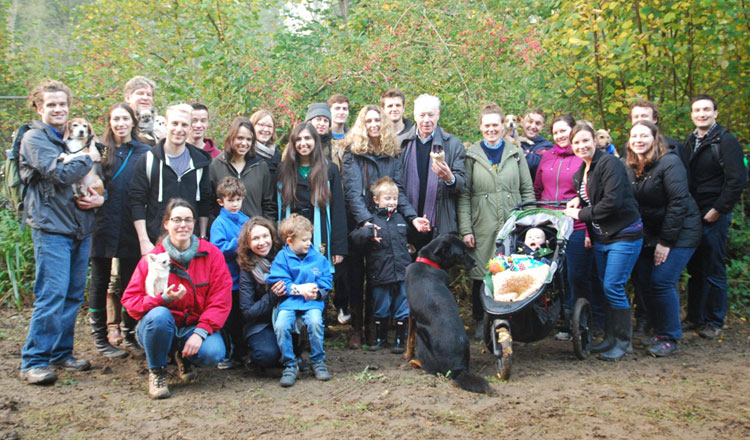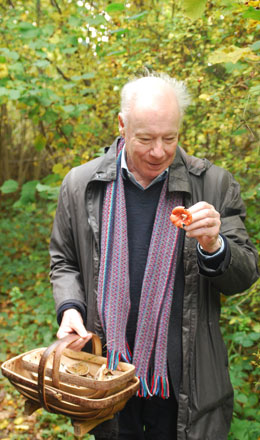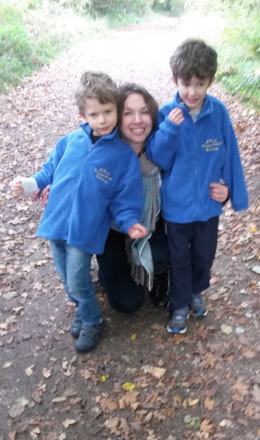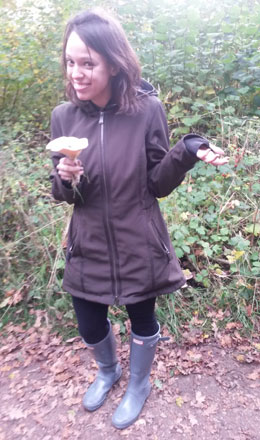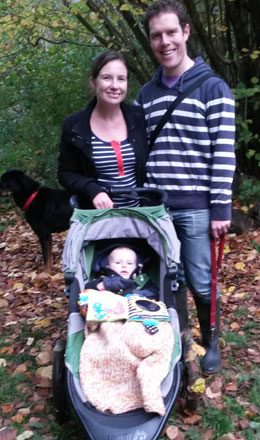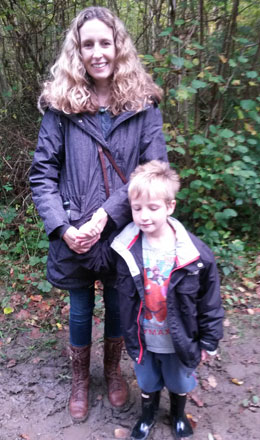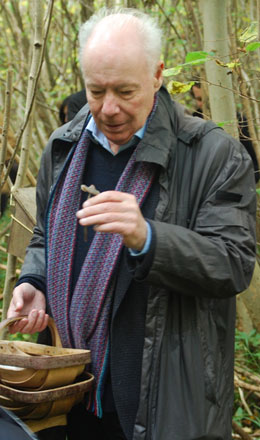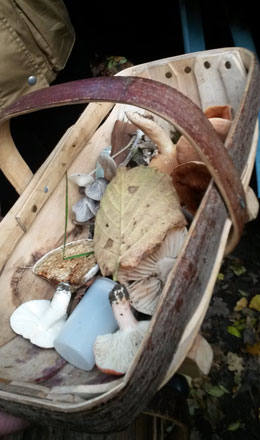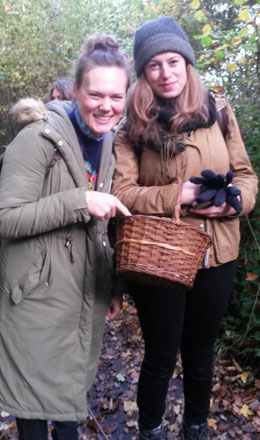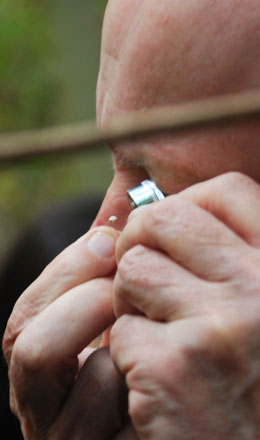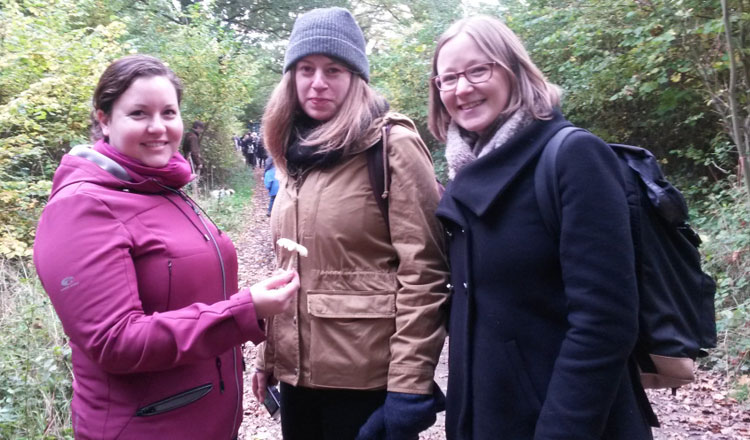Nick Jardine reports on the 2015 Cabinet of Natural History Fungus Hunt, which was held on 26 October.
There was a record turnout for this year's Fungus Hunt: 30 if children and dogs are included. By a happy coincidence there were exactly the same number of car spaces.
The turnout of fungi at Bradfield Woods was equally good; overall I noted nearly 60 species. Most striking were the rings of the huge white Leucopaxillus giganteus (Giant Funnel). There were a dozen or so species of Mycena (Bonnets), ranging from Mycena galericulata (Common Bonnet) with caps up to 5cm, to Mycena adscendens (Frosted Bonnet) with caps as small as 2mm, found by Emma Spary's son Simon. Then there were plenty of Tricholoma (Knights), Russula (Brittlegills) and Lactarius (Milkcaps), including the uncommon Tricholoma orirubens (Blushing Knight), the uncommon Russula luteotacta (Yellow-tinted Brittlegill) found by Tamara, and Lactarius pyrogalus (Fiery Milkcap) – I idiotically checked its taste and it was ghastly, red-hot as its English name implies!
There were some good edible ones: Lepista nuda (Wood Blewit), Clitopilus prunulus (The Miller) – delicious but easily confused with similar looking white poisonous ones – and best of all the uncommon Leccinum pseudoscabrum (Hazel Bolete), found by David Feller.
Thanks to all participants, especially the children who, being nearer the ground, are the best fungus hunters.
